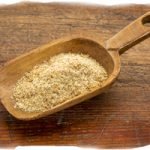The recent outbreak of salmonella from peanuts has focused attention once again on the safety of possible contaminated common food products. Learn how to prevent food borne illnesses with this health blog.
The recent outbreak of salmonella from peanuts, which killed nine and
made almost 700 terribly ill, has focused attention once again on the safety of common food items — once again raising important questions. How can the food industry protect consumers while retaining the nutritional quality of the food and food products it sells, and how can consumers protect themselves? Unfortunately, the processes typically used to kill food contaminants simultaneously undermine the value of that food; so that leaves those of us concerned about nutrition with a dilemma.
First, let’s look at the facts: salmonella breakouts usually occur when food has been handled, packaged, or cooked improperly. The most common sources of infection include animal feces, raw or undercooked meats and poultry, and particularly, eggs. In fact, one in every 10,000 eggs in the US Northeast is infected with salmonella. And to make matters worse, the salmonella bacteria can survive in water, which means that any vegetables or fruits that come into contact with contaminated water (such as water that has come in contact with organic fertilizer) can, in turn, become contaminated themselves. Also, fruits and vegetables can “catch” salmonella from contact with contaminated meats or from contact with unwashed hands that have been touching contaminated meat or poultry, or even from sharing a surface with contaminated products. Thus between the years 1996-2007, 33 salmonella outbreaks from vegetable and fruit sources were “reported” in the US.
And salmonella isn’t the only source of food-borne infection. In fact, a long list of possible contaminants — including staph, listeria, hepatitis A, viruses, E. coli, and various parasites — also can be spread via unwashed hands, contaminated water, or sharing dirty surfaces with contaminated sources (think lemon and lime wedges served at your favorite restaurant), or from eating uncooked or undercooked foods. Given that the Centers for Disease Control estimates that each year 76 million people in the US alone — or one out of every four Americans–gets sick from ingesting food-borne pathogens, the problem is a huge one. Of those millions who get sick, about 325,000 end up in the hospital and 5,000 die. Experts estimate that up to $34 billion is lost annually between the cost of medical care to treat food-borne illnesses and the resultant lost wages.
Unfortunately, food manufacturers may not have enough incentive to clean up violations that lead to food becoming tainted. Current laws governing contaminated foods date back to the “1938 Federal Food, Drug and Cosmetic Act.” This law governs food “prepared, packed, or held under unsanitary conditions whereby it may have become contaminated with filth, or whereby it may have been rendered injurious to health.” Violations of the worst type carry a maximum fine of only $10,000 and three years in prison, no matter how many people die or get sick from the tainted product. Although states in which people have gotten sick or died can prosecute negligent food companies on charges such as manslaughter, they rarely do so.
But even with the strictest standards and appropriate laws, accidents and human error can occur, so the question becomes how to absolutely prevent food-borne illnesses. Unfortunately, the problem is that although there are processes that can virtually eliminate the possibility of contamination “after the fact,” these procedures bring health problems of their own. For instance, the current darling of food safety experts is irradiation, either by exposure to cobalt-60 gamma sources, electron beam generators, or x-ray accelerators. Irradiation eliminates pathogens by breaking chemical bonds in the living tissue of insects, bacteria, molds, etc. for the specific purpose of killing them.
While irradiation has been used to replace toxic fumigants and fungicides and while it allows food to retain its color, texture, and even much nutritional quality, in the process of zapping the pests, the process also produces radiotoxins and aflatoxins. These are both potent carcinogens that can cause a host of health issues even beyond cancer. Plus, in the process of destroying pathogens, irradiation also destroys friendly bacteria, which means that any exposure to pathogens after irradiation leaves the product far more vulnerable to repopulation by unfriendly invaders, with no competitor to destroy the offending pathogens.
What’s the solution? The government in the US seems to prefer the “nuke the food” option. Regulations increasingly are allowing for irradiation of what ends up on the shelves. If you fear dying from food-borne illness above all else, opt for the nuked meats, pasteurized milk, and irradiated vegetables. This will allow you to postpone your death…at least until the radiotoxins and aflatoxins kick in. If that option doesn’t appeal to you, try buying organic produce from local purveyors that you know, and wash it thoroughly. In addition, keep your immune system functioning at maximum and some pathogen destroyers in the medicine chest. Just remember that while it’s disturbing to consider that 5000 annually die from food poisoning, 560,000 die from cancer. You can’t absolutely avoid risk, but you can choose which risk you prefer to take.
:hc












What about washing food in the electrically-charged saline water hotels are now using for general cleaning – (for commercial-level cleaning) and/or ozonated water for home use? Perhaps either would help reduce the odds of getting sick?
Robert
WHY NOT USE OZONE?
ALSO
Stop Federal Takeover of Food Regulation in H.R. 875
http://www.naturalnews.com/025824.html